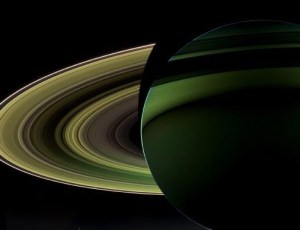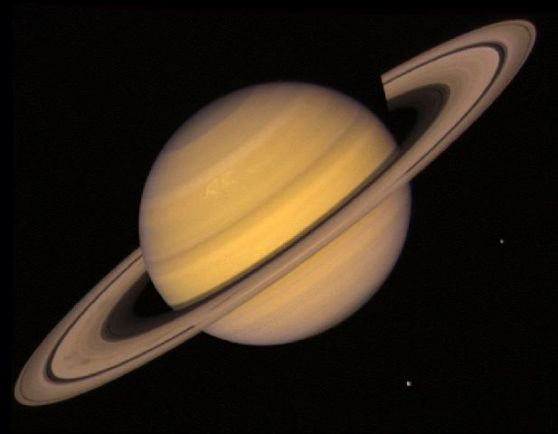
The view of Saturn that we’re used to is a sunlit planet in yellows and oranges, with beautiful, massive rings at a 15-degree angle.
For only the second time, NASA’s Cassini spacecraft has captured a view of perhaps the solar system’s second-most-beautiful planet from “behind” — opposite the sun. The result is that the planet is backlit, and the sun’s rays stream through, illuminating the ring divisions.

Above: A close-up …
Cassini’s imagers took exposures using an infrared camera, plus red and violet filters on a visible-light camera from 500,000 miles distance. NASA then combined the images to build the final color-enhanced picture. Image scale is about 30 miles to the pixel.
The pictures don’t just look pretty, they also reveal important scientific information. NASA said that this “special, very-high-phase viewing geometry lets scientists study ring and atmosphere phenomena not easily seen at a lower phase.”
If you look closely, you can also see two of Saturn’s moons in the image: Enceladus and Tethys. They’re tiny — you may have to clean your monitor — on the left side Saturn, under the rings.
And here’s the more traditional image of Saturn, sun-side version:



